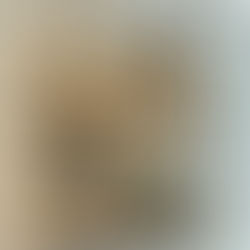Wax vs Polyurethane. When and Where to Use them.
After refinishing a piece of furniture it is obviously very important to protect it so it can withstand the indoor elements (oils from your hands, spills, sticky children fingers etc.). You have some options on what you use to protect your piece and this blog will tell you the difference so you can choose the best option for you.
Polyurethane:
What is Polyurethane? Polyurethane is probably the most common sealant and protectant for wood. It comes in a variety of forms and is pretty darn good at sealing the wood off so it isn’t easily harmed by common use. Polyurethane provides protection from chips, scratches, and water damage.
How It Works: In a nut shell, Polyurethane is composed of molecules that bond and produce a tough coat over the wood as they dry.
Varieties:
Finish: Satin or Gloss-- just like with paint you get to choose between a glossy surface or a more matte finish that resembles unfinished wood.
Oil Based: Oil Based Polyurethane oils the wood as it dries leaving a nice rich tone. The oil based varieties take longer to dry. Takes only two coats to get a nice protective barrier on the wood. Since it does have some compounds that are frowned upon it might not be as easy for you to get your hands on. Cleans up with mineral spirits.
Water Based: Doesn’t affect the color of the wood. Dries more quickly, but requires more coats to get a good seal. Cleans up with soap and water.
Wipe On: Wipe on Polyurethane is a super thin polyurethane. It can easily be applied with a paper towel or rag and goes on without streaks. The downfall of this variety is it does require extra coats to get enough protection.
Paint on: This type of Polyurethane is thicker and is typically painted on with a brush. It takes less coats, but if you aren’t careful you can end up with brush strokes.
When to Use It: High traffic areas where the wood will be exposed to children, water, and used frequently. Kitchens, coffee tables, end tables, dining room tables, chairs-- all should be treated with polyurethane to protect the wood and your finish.

Achieving the Antiqued Look: If you are looking to get an antiqued look on wood that will be treated with Polyurethane you need to use a Glaze. The glass is painted on and any excess is wiped off before you put on the finishing coats of poly. (see image to the left that was finished with dark glaze and polyurethane-- the glaze makes the design on the wash stand stand out and look more distressed/aged)
Waxes and Oils

What is Wax? Wax is a form of wood protectant that penetrates the wood with wax to form a barrier between the wood and any damaging things it may come in contact with (liquids etc).
How it Works: As said before, wax penetrates the wood and provides a barrier, it doesn’t provide the same hard surface as Polyurethane.
Varieties:
Beeswax Furniture Polishes: Furniture polishes uses beeswax and other oils to penetrate the wood. When the wood is full of the oil is makes it so that water cannot penetrate the grain. These are often used on butcher block counter tops and other wood surfaces that do not have a polyurethane coat.
Folkart Home Decor Wax: Folkart’s Home Decor Wax takes the place of Polyurethane and provides a longer lasting wax surface (you only need to rewax once a year or so).
When to Use it: Any unfinished wood pieces (butcherblock countertops, antique wood pieces etc. should be treated with a beeswax/oil to keep the wood looking nice. Folkart Home Decor Wax is often used with pieces that were painted with Chalk Paint and are not used in high traffic areas (avoid using in kitchens or bathrooms).

Achieving the Antiqued Look: The reason I like to use Folkart Home Decor Wax is because there is both a clear and dark wax used to achieve the antique look on furniture I restore. The dark wax is similar to a glaze, but it tends to be more noticeable. The process is a little more involved than using a glaze. A coat of clear wax is put on the furniture piece, dries for 24 hours, and then the dark wax is put over the top. The clear wax keeps the dark wax from going crazy so you can easily wipe off any excess. After the dark wax dries, 2 more coats of clear wax are put over the top. (See image to the left)
Need some inspiration? Check out our Refinished Furniture Gallery
Have a piece of furniture that needs some love, but don’t want to do it yourself-- contact us.
















